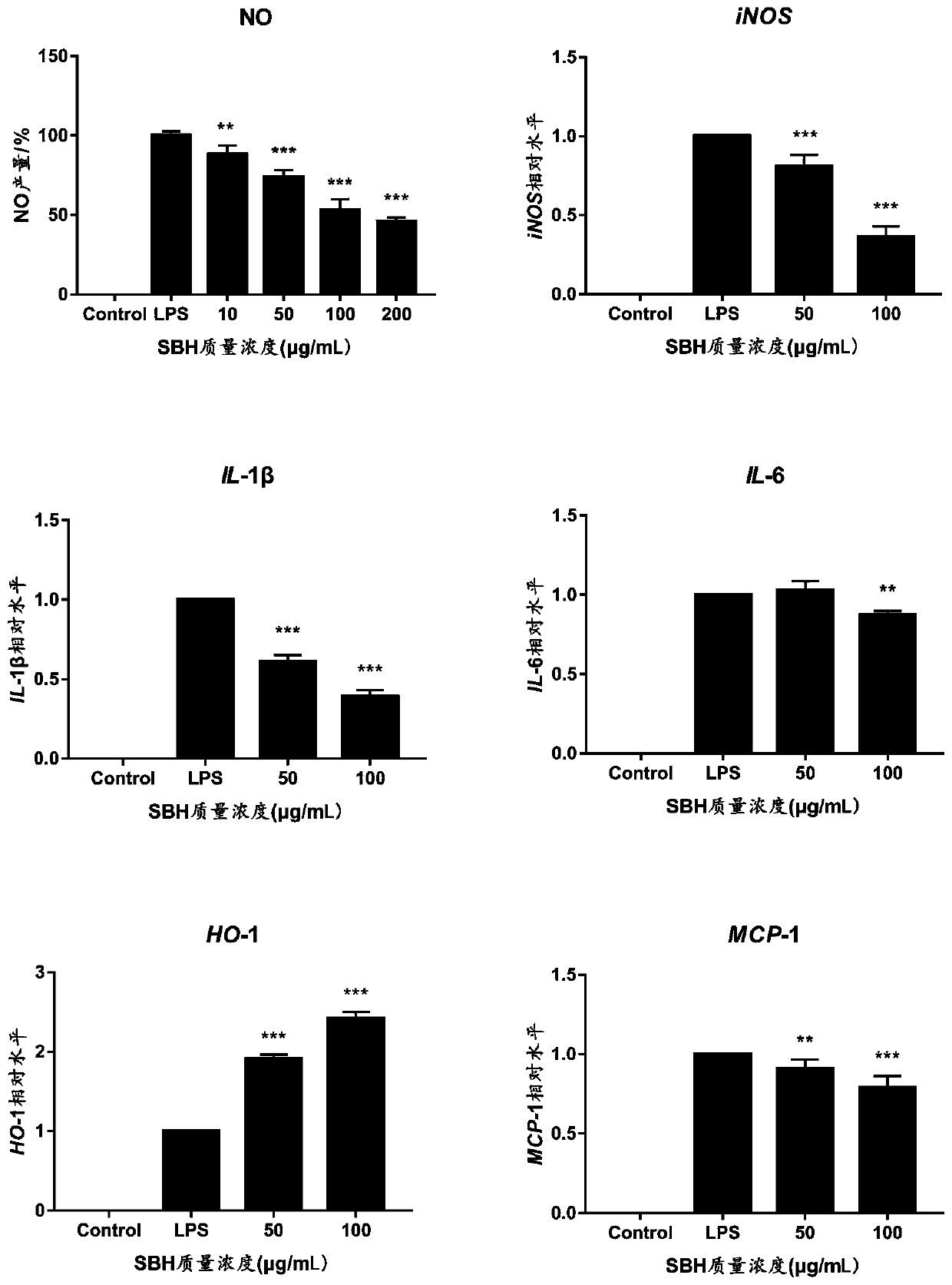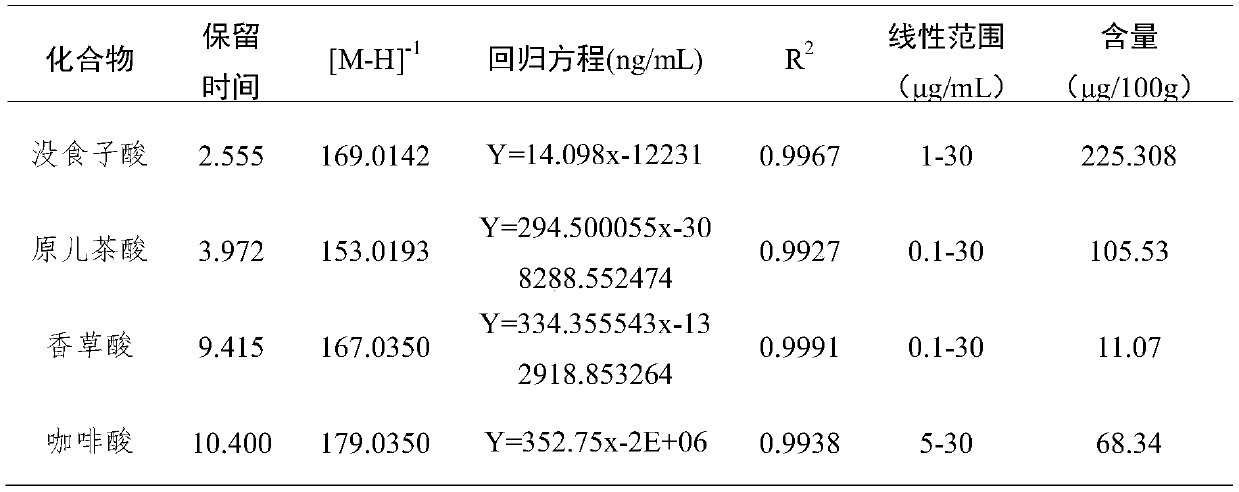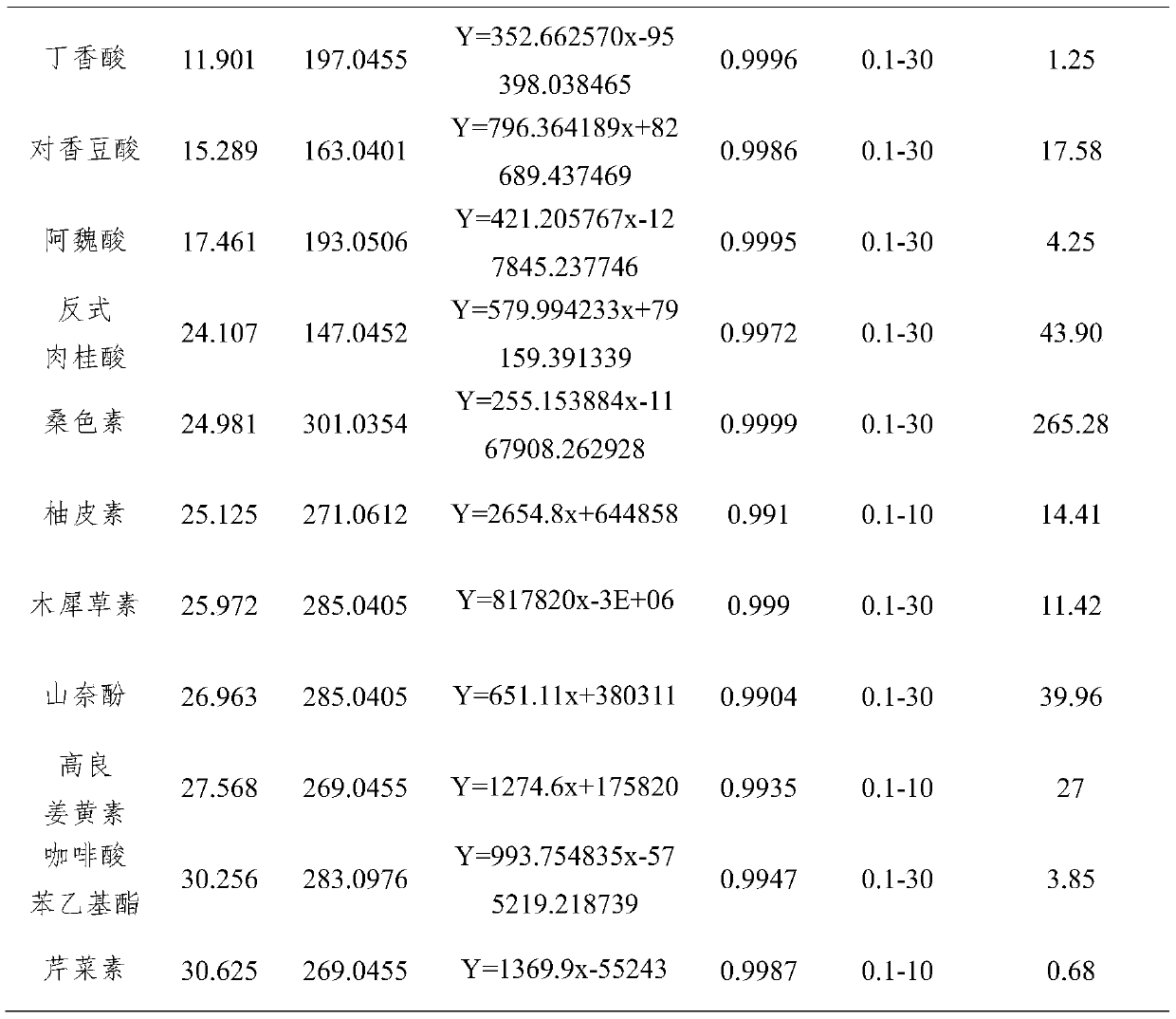Extraction of polyphenols from stingless bee honey and its application in immune regulation
A technology of honey extract and stingless bee, applied in the field of biochemistry, to achieve significant anti-oxidation and wide application value
- Summary
- Abstract
- Description
- Claims
- Application Information
AI Technical Summary
Problems solved by technology
Method used
Image
Examples
Embodiment 1
[0032] Weigh 800g of stingless bee (Hainan, Trigona ventralis Swith) honey, dissolve it in 4L acetic acid (pH 2.0) water, stir and dissolve, sonicate for 30min, filter with cotton, and set aside. After soaking Amberlite XAD-2 macroporous resin in ethanol for 24 hours, weigh 800g of activated macroporous resin, wash it with water 2-3 times until it is odorless, pour it into the aqueous solution of stingless bee honey, and stir for 1 hour to absorb. Stand still, discard the supernatant, fill the macroporous resin into a glass column, rinse with 1.6L pH 2 acetic acid aqueous solution, 2.4L pure water to remove polar substances such as sugar, and finally use 6.4L anhydrous The ethanol solution was eluted and the eluate was collected, concentrated under reduced pressure at 40°C to a solid, a total of 1.2152 g, redissolved in 10 mL of pure water, and extracted with 40 mL of ethyl acetate. The ethyl acetate layer was collected and blown dry with nitrogen to obtain 0.552 g of stingles...
Embodiment 2
[0038] Example 2 Test of Immunomodulatory Ability of Stingless Bee Honey Extract
[0039] Remarkable reproducibility and Reliability, widely used to quantify the antioxidant capacity of natural products and plant extracts. DPPH is a very stable nitrogen-centered free radical, which reflects its antioxidant properties by capturing free radicals of substances; ABTs+ is generated after oxidation of ABTS, and ABTs+ is inhibited when antioxidants exist; reducing Fe 3+ The ionic capacity can reflect the antioxidant capacity of the substance. Stingless Bee Honey Extract DPPH IC 50 The value is 435±0.54 μg / mL, ABTS IC 50 The value is 423±0.34μg / mL, RP is 0.582±0.02μmol Trolox / g, and has good oxidation resistance.
[0040] Table 2 Contents of total phenolic acids and total flavonoids and antioxidant capacity of stingless bee honey
[0041]
[0042]
[0043] Macrophages play a key role in innate immunity, and activated macrophages can initiate and increase a variety of inflam...
PUM
 Login to View More
Login to View More Abstract
Description
Claims
Application Information
 Login to View More
Login to View More - R&D
- Intellectual Property
- Life Sciences
- Materials
- Tech Scout
- Unparalleled Data Quality
- Higher Quality Content
- 60% Fewer Hallucinations
Browse by: Latest US Patents, China's latest patents, Technical Efficacy Thesaurus, Application Domain, Technology Topic, Popular Technical Reports.
© 2025 PatSnap. All rights reserved.Legal|Privacy policy|Modern Slavery Act Transparency Statement|Sitemap|About US| Contact US: help@patsnap.com



